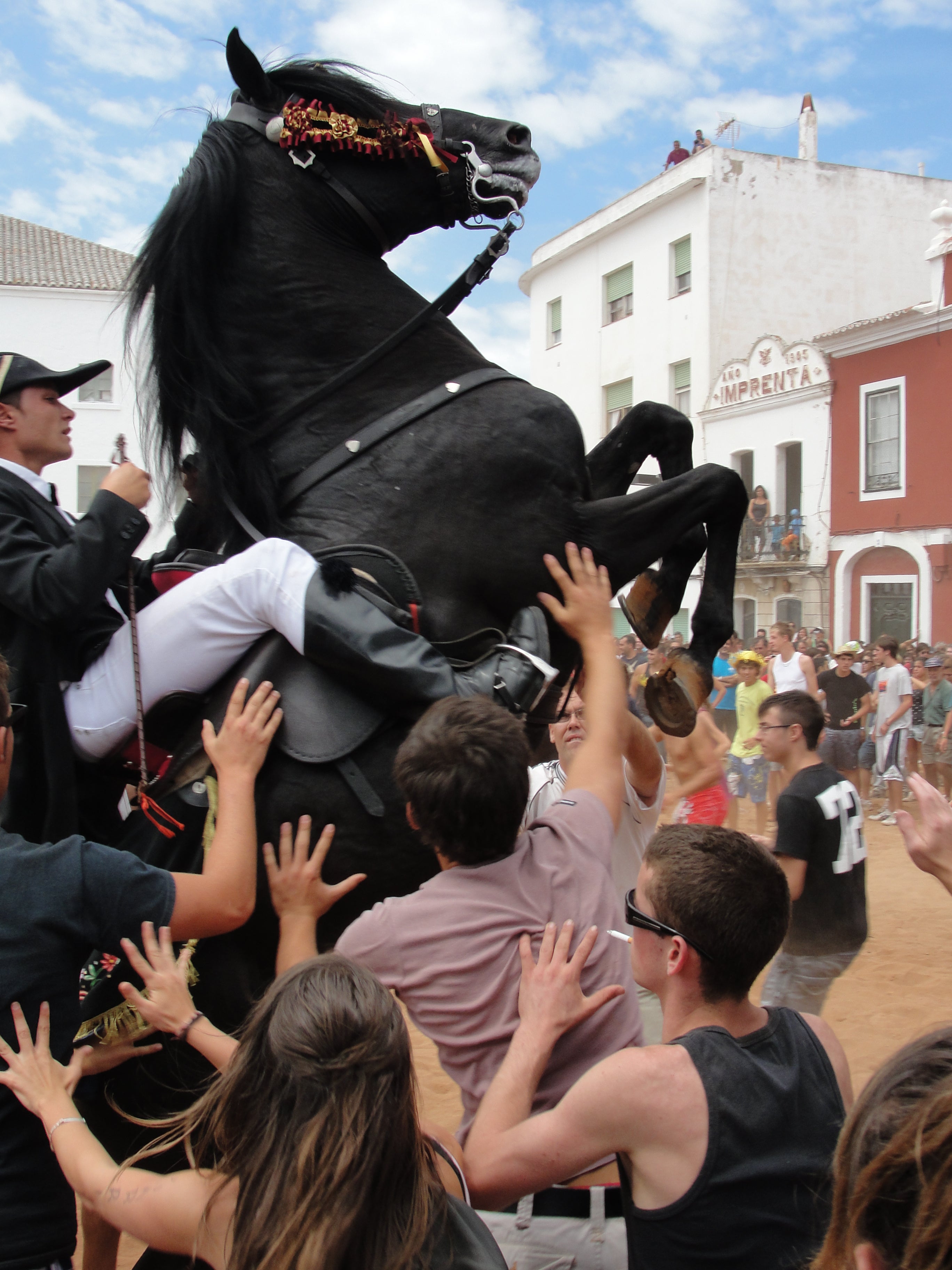Experience rich history and culture in Menorca
From Moorish architecture to Bronze Age burial chambers and a spell of British rule, the island has a variety of historical influences. And don’t visit without enjoying a local fiesta, says Hugo Valentine

What is culture? Is it simply opera, art galleries and museums – or does it extend to everyday objects and ways of life? Certainly when it comes to avarcas, the celebrated Menorcan sandals have had a big impact on the island’s culture: the strength of the local leather-working industry was one reason the islanders didn’t feel the need to grasp at tourism with quite same alacrity as their Balearic neighbours.
Or take the classic Menorcan house, with its white-tiled roofs and windows and doors painted a uniform shade of dark green. This vernacular architecture, with its intricate irrigation systems, is strongly Moorish in influence – the nearly 400 years of Arab rule (from 903 to 1297) being just one of multiple waves of invasion, settlement and colonisation.
Menorca’s first inhabitants were from the Spanish mainland, and the island can claim the greatest concentration of well-preserved places of prehistoric culture in the world, mostly from the Talayotic period that existed during the Iron Age. Menorca is only 700 square kilometres in size and yet there are more than 1,500 sites on the islands – that is to say two per square kilometre! No wonder that Unesco’s World Heritage Committee is considering a request from the Spanish government that Talayotic Minorce (below) be declared a World Heritage Site.
If you only have time to visit one of the sites then Naveta d’Es Tudons is the business: a Bronze Age burial chamber that is Spain’s oldest roofed building, it contained at least 100 corpses when it was excavated in the 1950s. The coins, pottery and other objects of the period are well displayed at the Museo de Menorca in Mahón.
After centuries of peaceful co-existence with Greek and Phoenician traders, Menorca experienced the first of its periodic invasions when the Carthaginian warrior Magón, the brother of the famous Hannibal, landed on the island. Mahón – also known as Maó – is supposedly named in his honour, while Menorca owes its appellation to the Romans who, having driven out the Carthaginians in 123 BC, renamed it Minorica, part of the province of Balearis Minor.
In 903AD the island was captured by the Moors, becoming part of the Caliphate of Córdoba under Islamic rule; the common Menorcan place name beginning with bini (meaning ‘son of’) dates from this period. Ciutadella, which became the island’s capital (under the name Medina el Jezira) has the best extant examples of Moorish architecture. Unfortunately much of the city was destroyed on 9 July 1558, when a Turkish armada laid it to waste, with the town’s entire population being sold into slavery. It’s no fun living on the crossroads of history.
Bubonic plague, swarms of locusts and pirate raids reduced Menorca to a sorry state, a decline only reversed with the arrival of the British and French during the 18th century. The period of British rule (comprising three different stages in the years 1708-1802) has been described as the ‘Golden Age of Menorca’: the enlightened governor Richard Kane built a road between Mahón and Ciutadella, introduced Fresian cows, apples and progressive reforms.
The British vestiges are occasionally unmissable – such as the vast Fort Marlborough at the mouth of Mahón Harbour – but more often subliminal: note the bow-fronted sash windows that can sometimes make you feel as if you’re walking around Brighton instead of Mahón. See-sawing between French and British colonisers finally ended in 1802 when the island was returned to the Spanish crown.
Summer explodes with cultural activity, including a stellar opera week, choir music and outdoor concerts. The most communal activity is the fiesta – a three-day street party that includes music, dancing, fireworks, pomada (a mix of gin and lemonade) and the island’s famous rearing black horses. Having been paraded, these descendants of Berber steeds are raced down the streets, performing jaleos where they rear up on their rear legs as young bloods attempt to lay a hand on the horse’s heart.
Running until September – Mahón’s being the last – fiestas are not laid on for tourists, but are steeped in local significance: Menorcans take great delight in them. But if you want to consume culture in a more contemplative way then both Mahón and Ciutadella are great to just walk around. The latter is the more obviously alluring, but the narrow streets and unexpected squares of Mahón provide a rewarding amble. Interior towns are seemingly uninterested in tourism, although if you’re heading towards Es Mercadal in the island’s centre, don’t forget to make a detour up Monte Toro, with its statue of Christ. The view is great.
Subscribe to Independent Premium to bookmark this article
Want to bookmark your favourite articles and stories to read or reference later? Start your Independent Premium subscription today.

Join our commenting forum
Join thought-provoking conversations, follow other Independent readers and see their replies